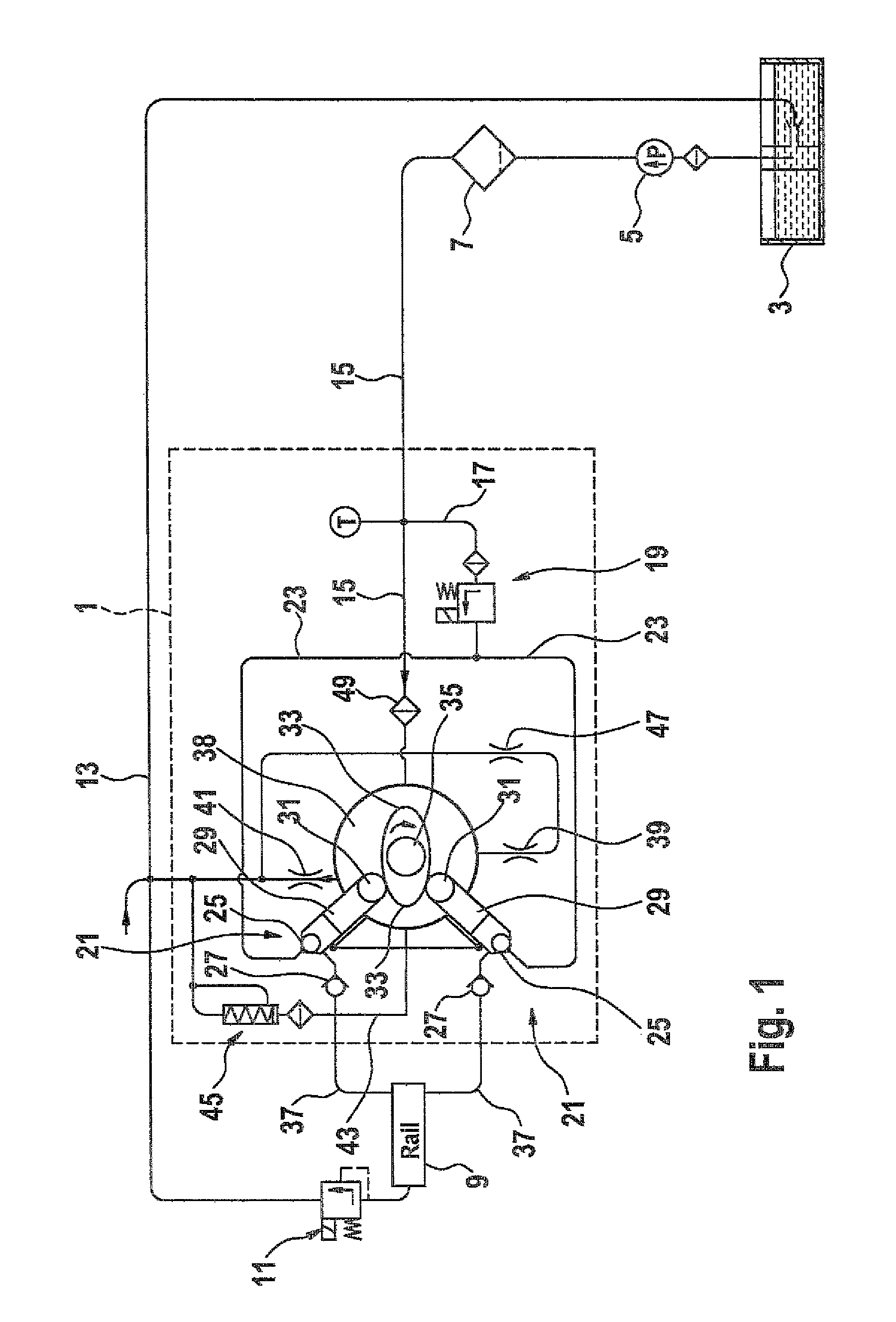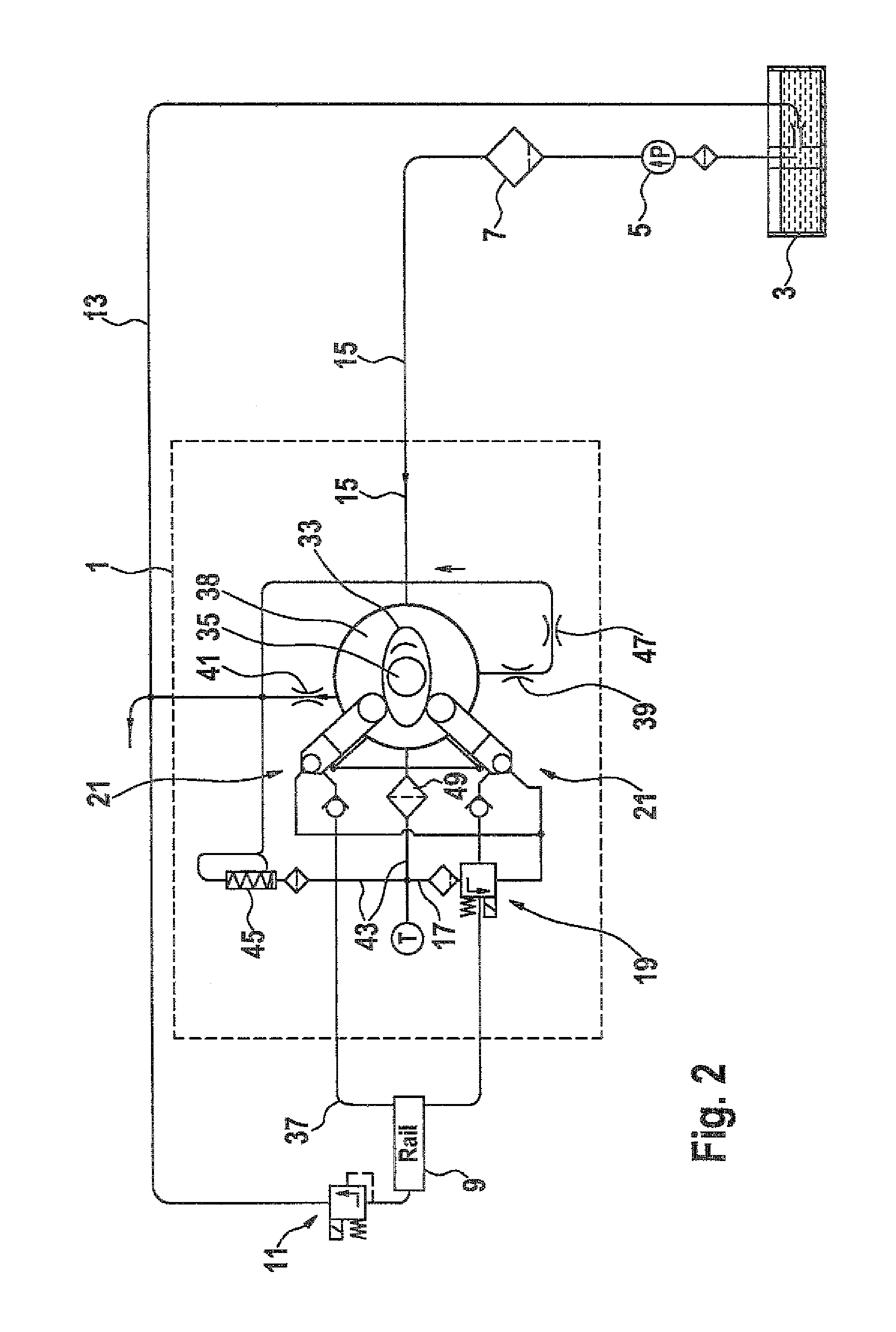Fuel injection system for an internal combustion engine
a fuel injection system and internal combustion engine technology, applied in the direction of liquid fuel engines, positive displacement liquid engines, electric control, etc., can solve the problems that conventional high-pressure fuel pumps are not capable of withstanding these increasing loads, and achieve the effect of improving the cooling of the pump housing and the drive shaft, and reducing the tendency to cavitation
- Summary
- Abstract
- Description
- Claims
- Application Information
AI Technical Summary
Benefits of technology
Problems solved by technology
Method used
Image
Examples
Embodiment Construction
[0030]The high-pressure fuel pump 1 is part of a fuel injection system that essentially comprises a tank 3, a prefeed pump 5, a filter 7, a rail 9, and a pressure limiting valve 11. The injectors, which are connected to the rail 9, are not shown in the drawings. The pressure limiting valve 11 discharges into a return line 13, into which the leak fuel quantities from the injectors are also carried away. The return line 13, in this first exemplary embodiment, discharges into the tank 3, where it drives a jet pump (not identifiedby reference numeral).
[0031]In the interior of the high-pressure fuel pump 1, there is a temperature sensor T. The high-pressure fuel pump 1 communicates hydraulically with the tank 3 via a fuel feed line 15, the filter 7, and the prefeed pump 5.
[0032]Inside the high-pressure fuel pump 1, a first branch line 17, in which a metering unit 19 is disposed, branches off from the fuel feed line 15. The metering unit 19 serves to control the quantity of fuel aspirated...
PUM
 Login to View More
Login to View More Abstract
Description
Claims
Application Information
 Login to View More
Login to View More - R&D
- Intellectual Property
- Life Sciences
- Materials
- Tech Scout
- Unparalleled Data Quality
- Higher Quality Content
- 60% Fewer Hallucinations
Browse by: Latest US Patents, China's latest patents, Technical Efficacy Thesaurus, Application Domain, Technology Topic, Popular Technical Reports.
© 2025 PatSnap. All rights reserved.Legal|Privacy policy|Modern Slavery Act Transparency Statement|Sitemap|About US| Contact US: help@patsnap.com



